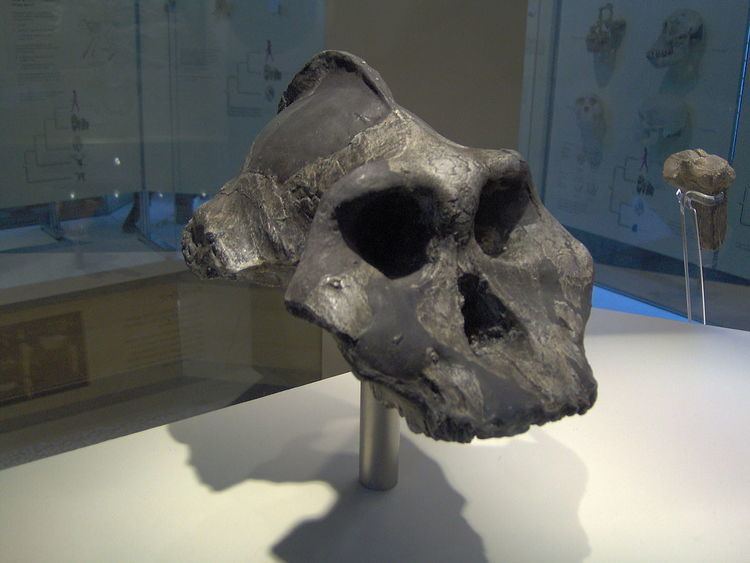 | ||
A sagittal crest is a ridge of bone running lengthwise along the midline of the top of the skull (at the sagittal suture) of many mammalian and reptilian skulls, among others. The presence of this ridge of bone indicates that there are exceptionally strong jaw muscles. The sagittal crest serves primarily for attachment of the temporalis muscle, which is one of the main chewing muscles. Development of the sagittal crest is thought to be connected to the development of this muscle. A sagittal crest usually develops during the juvenile stage of an animal in conjunction with the growth of the temporalis muscle, as a result of convergence and gradual heightening of the temporal lines.
A sagittal crest tends to be present on the skulls of adult animals that rely on powerful biting and clenching of their teeth, usually as a part of their hunting strategy. Skulls of some dinosaur species, including tyrannosaurs, possessed well developed sagittal crests. Among mammals, dogs, cats, lions, and many other carnivores have sagittal crests, as do some leaf eaters, including tapirs and some apes.
Sagittal crests are found in robust great apes, and some early hominins (Paranthropus). Prominent sagittal crests are found among male gorillas and orangutans, and do occur but only rarely in male chimpanzees such as Bili apes.
The largest sagittal crest ever discovered in the human lineage belongs to the "Black Skull", Paranthropus aethiopicus field number KNM WT 17000, the earliest known robust hominid ancestor and the oldest robust australopithecine discovered to date. The prominence of the crest appears to have been an adaptation for the aethiopicus's heavy chewing, and the Black Skull's cheek teeth are correspondingly large. Smaller sagittal crests are also present on the skulls of other Paranthropines, including Paranthropus boisei and Paranthropus robustus.
